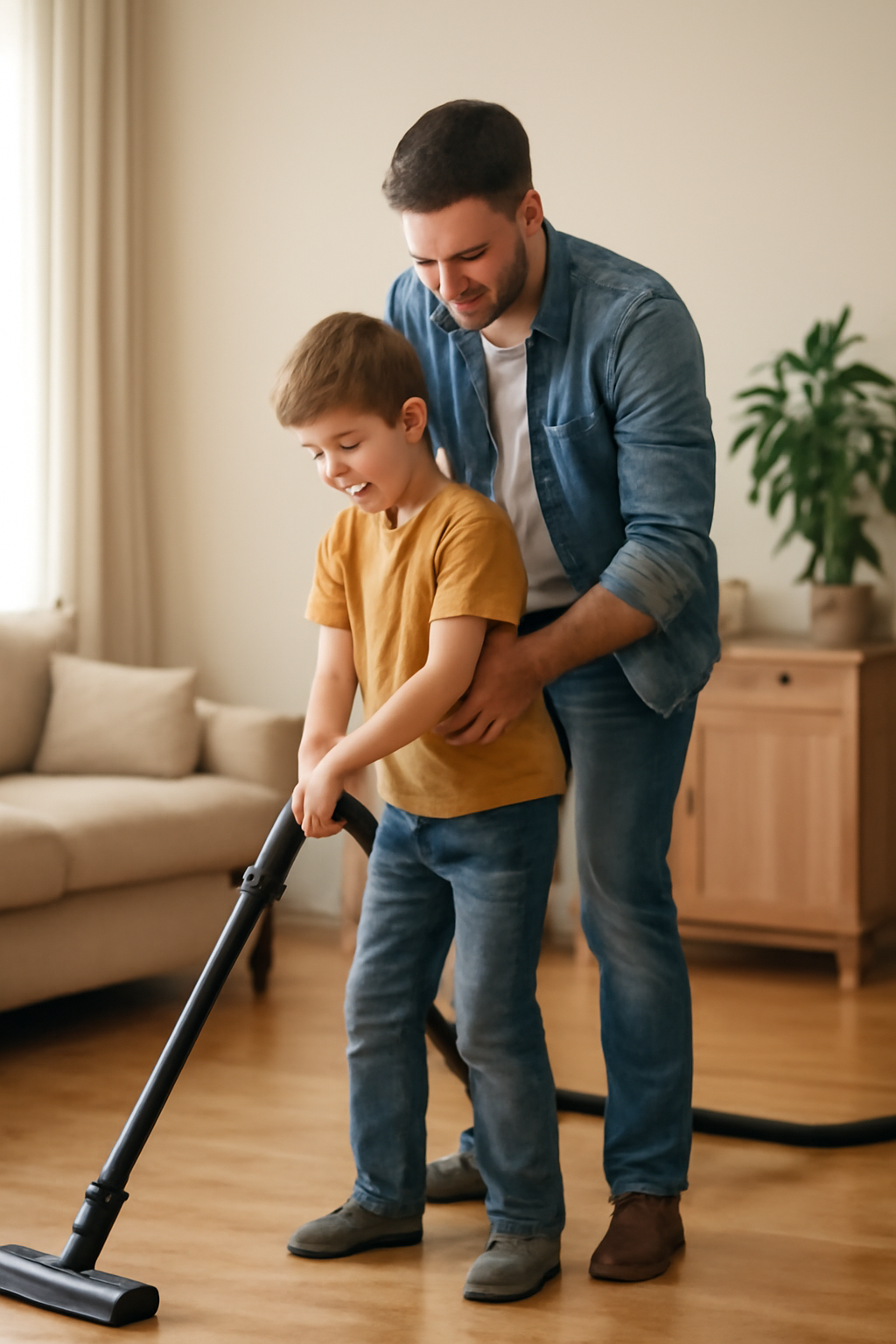Responsibility is one of the most important values a child can learn. It gives them the tools to manage school, friendships, and eventually work and family life. But teaching responsibility isn’t about giving endless chores or strict rules—it’s about guiding your child to understand consequences, make good choices, and feel capable.
Here’s how to teach kids about responsibility step by step, without overwhelming them.
Why Responsibility Matters
Responsible children are more likely to:
- Follow through on commitments
- Manage time and tasks effectively
- Build trust with others
- Develop independence and problem-solving skills
- Respect rules and boundaries
Responsibility builds the foundation for success in adulthood.
Start with Small, Age-Appropriate Tasks
Children learn best when tasks match their developmental stage. Start small and build gradually.
- Toddlers: Put toys in a basket, help feed pets
- Preschoolers: Set the table, water plants
- School-aged kids: Do homework independently, pack lunch, help with laundry
- Teenagers: Manage part-time jobs, organize schedules, budget allowance
Small wins build confidence.
Be Clear About Expectations
Kids need to know exactly what’s expected. Instead of vague instructions like “Be responsible,” give specific directions:
- “Please put your shoes in the closet.”
- “Your job is to feed the dog after school.”
- “You are responsible for finishing homework before screen time.”
Clarity prevents confusion and frustration.
Allow Natural Consequences
Instead of rescuing your child every time, let them experience the natural results of their choices.
Examples:
- Forget homework? They deal with the teacher’s reaction.
- Leave a toy outside? It might get wet or lost.
- Spend allowance too quickly? They won’t have money for what they really want.
Natural consequences teach responsibility far more effectively than constant lecturing.
Praise Effort and Progress
Acknowledge when your child shows responsibility.
- “I’m proud you remembered to clean up without being asked.”
- “You worked hard to finish your homework before dinner—well done.”
- “Thank you for taking care of your little brother, that was responsible.”
Positive reinforcement motivates repetition.
Teach Problem-Solving Skills
Responsible kids don’t just follow instructions—they learn to handle problems. Encourage your child to:
- Identify the problem
- Brainstorm solutions
- Choose one and try it
- Reflect on the outcome
Problem-solving builds independence.
Set Consistent Routines
Responsibility thrives in structure. Create daily routines for:
- Homework
- Chores
- Bedtime
- Screen time
Consistency helps children know what to expect and reduces power struggles.
Avoid Overloading
Responsibility doesn’t mean overwhelming kids with tasks. Too much too soon can create stress and resentment.
- Balance chores with playtime
- Adjust expectations by age
- Allow downtime for creativity and rest
Healthy responsibility builds confidence—not burnout.
Model Responsibility in Your Own Life
Show your child what responsibility looks like:
- Keeping promises
- Admitting mistakes
- Managing money wisely
- Taking care of your home and health
Children learn best by observing.
Final Thought: Responsibility Is a Lifelong Skill
Teaching responsibility is not about perfection—it’s about progress. Each small task, each moment of accountability, helps your child grow into someone who is dependable, thoughtful, and independent.
By starting small, setting clear expectations, and modeling responsibility yourself, you’re giving your child one of life’s most valuable skills.
Because responsibility isn’t a burden—it’s a path to freedom and success.
